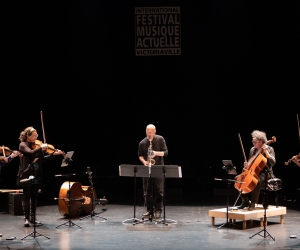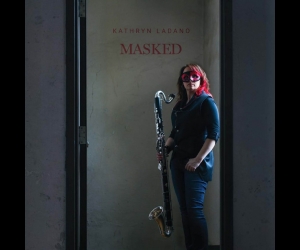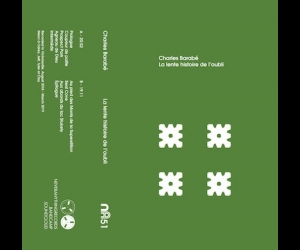The two-page program for this year’s Strata Festival was headed by the words “Eighth Annual.” That surprised me. At no point did I sense the scale or the atmosphere of a festival that had been running for close to a decade; the crowd was sparse and the overall vibe I gleaned from overhearing certain attendees’ conversations was that of a proudly niche affair. As the four events unfolded—one per day over an extended weekend—my impression was borne out, as the festival coalesced into a messy mosaic of (mostly) interesting, talented artists curated rather arbitrarily. Despite varying levels of craftsmanship on display, the only thing cohesive about this festival was the overall impression that it was a smashing success just for existing.
That first event at the Roxy Theatre was a program of three short films, all made by young local filmmakers and each with live accompaniment written by three young local composers. In theory, a novel and exciting endeavour; in reality, a hit-and-miss collection of pieces that did not add up to the sum of their parts. Two of the films were wonderfully made shorts, one an experimental horror film shot on 8mm film, the other a sad, haunting portrait of the small Chinese village where the director originated. The accompaniment was adequate, but felt self-contained, the music asserting its own prowess instead of truly accompanying the images. The other film screened, Jackpot, was so unwatchable and amateurish that it made me reconsider the entire festival’s curatorial philosophy. Not only was it a poor adaptation of silent-film language, it was just a confusing and cheaply made story that contrasted poorly with the other films. The accompaniment was admirable in its attempt to achieve anything at all in conjunction with this film, but you could tell the visuals and the music simply were not on the same page.
The festival continued the following evening at the Remai Modern Art Gallery with “Northern Landscape Style,” an event that, while a marked improvement in terms of craft, was frustratingly arbitrary. The event’s curator and guest artist Michel Boutin noted that the event was an attempt to use sound to paint a picture, to trigger individual imagination. What in the world a clunky, ham-fisted, spoken-word poet and a jovial fiddler had to do with that I am not so sure. Tod Emel’s droney, ambient performance was more in line with the event’s central conceit, crafting a suitably haunting and evocative soundscape. Boutin himself, in his performance, scraped the opposite end of an amplifier cord against what appeared to be a buffalo skull, which resulted in a unique and effective—albeit grating—sound. I believe his idea was to utilize remnants of nature to create an abrasive and challenging collage of sounds, and in that sense, he was right on the money. But it was not enough to salvage another mixed bag of an evening.
Alain Perron curated the third night’s performance, which involved a mixture of his own compositions and those of a few other composers, including local artists Kirsten Ewart and Kendra Harder. This was definitely the best and most coherent evening of music, and Perron put on an impressive show with bouncy, fun compositions like Hommage à David Bowie and the angular, revisionist jazz of Cycle 4. If more of the festival were like this, attendance might increase.
While Strata hosted an abundance of talent, the organizers did not strike me as having much of a vision of how to utilize and curate them. To be fair, one of the organizers, Darren Miller, did provide me with some insight into his process, telling me, “I think of it much more as an incubator than a typical new-music festival.” He then, however, added, “We're always striving to keep our level of curation and artistry on par with the broader scene.” Those maxims seem here to be at odds with each other rather than working together. The program makes more sense as an “incubator”; but then again, what good is an incubator if it operates within a self-imposed vacuum?


